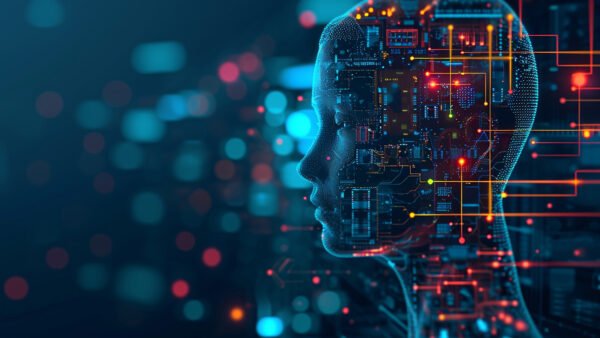The AI boom has reshaped industries, accelerated innovation, and created new markets. At the center of this revolution stands Nvidia, a company that’s not only booming but driving the AI landscape with its groundbreaking hardware. From training massive language models to powering autonomous vehicles, Nvidia’s GPUs (Graphics Processing Units) have become the backbone of modern AI development.
The Role of Nvidia in the AI Revolution
AI relies on immense computational power. Training models like ChatGPT or image-generative systems demands advanced hardware capable of handling billions of calculations per second. This is where Nvidia excels.
• Nvidia’s GPUs provide the parallel processing capabilities essential for AI tasks.
• Their hardware accelerates training, inference, and data processing.
• AI pioneers like OpenAI, Google, and Microsoft rely on Nvidia GPUs to build state-of-the-art systems.
Nvidia’s dominance in the AI hardware space isn’t just a result of luck. It’s the outcome of decades of innovation, strategic investments, and a clear focus on the future of computing.
Key Innovations That Set Nvidia Apart
Nvidia’s success lies in its constant pursuit of innovation. Here are some key breakthroughs:
1. CUDA Framework
Nvidia revolutionized GPU programming with the CUDA platform, which allows developers to harness GPU power for more than just graphics.
• CUDA makes parallel computing simpler and more accessible.
• It’s widely used for AI training and deep learning applications.
• This innovation opened the doors for GPUs to dominate the AI hardware market.
2. A100 Tensor Core GPUs
The A100 Tensor Core GPUs are at the heart of AI data centers worldwide.
• Designed specifically for AI workloads.
• Support massive parallelism with high efficiency.
• Provide unmatched performance for both training and inference.
These GPUs have become essential for companies building large-scale AI systems.
3. H100: The Next Generation
Nvidia’s H100 GPUs, powered by the Hopper architecture, take performance to new heights.
• Optimized for transformers, the core technology behind language models like GPT.
• Offers a tenfold improvement in training speed compared to previous generations.
4. DGX Systems
Nvidia’s DGX systems are ready-to-deploy AI supercomputers.
• Integrates multiple GPUs with optimized software.
• Ideal for enterprises entering the AI space.
• Provides a complete solution for training and deploying AI models.
How Nvidia Powers Industries with AI Hardware
Nvidia’s impact extends across diverse industries. Let’s explore how their hardware is transforming various domains:
1. AI Research
AI researchers rely on Nvidia GPUs to push the boundaries of innovation.
• Nvidia GPUs are the standard for training complex AI models.
• Major breakthroughs, like OpenAI’s GPT series, were made possible by Nvidia hardware.
• Nvidia’s AI supercomputing platforms enable researchers to solve problems faster.
2. Healthcare
AI-driven healthcare innovations are powered by Nvidia’s solutions.
• Used in medical imaging to detect diseases like cancer.
• Powers drug discovery through AI models.
• Enhances patient care with predictive analytics.
3. Autonomous Vehicles
Self-driving cars need enormous computational power to process data from sensors and cameras.
• Nvidia’s Drive platform provides the AI backbone for autonomous vehicles.
• Companies like Tesla and Waymo rely on Nvidia for their autonomous technologies.
4. Gaming and Metaverse
Though rooted in gaming, Nvidia’s GPUs now empower the creation of immersive virtual worlds.
• Realistic physics simulations.
• AI-generated content for the metaverse.
• Real-time ray tracing for ultra-realistic visuals.
5. Enterprise AI
Enterprises are using Nvidia GPUs to integrate AI into their workflows.
• Optimized for predictive analytics.
• Enhances business decision-making through real-time insights.
• Powers intelligent automation for increased efficiency.
The AI Boom and Nvidia’s Explosive Growth
The AI boom has been a key driver of Nvidia’s financial success. Their hardware is indispensable for companies racing to build advanced AI systems.
Record-Breaking Revenues
• Nvidia reported record revenues of $13.5 billion in Q2 2023, fueled by AI hardware demand.
• Their data center segment, driven by AI GPUs, now outpaces their gaming division.
Stock Performance
• Nvidia’s stock surged by over 200% in 2023, reflecting investor confidence.
• The company briefly crossed a $1 trillion valuation, joining the elite club of tech giants.
Challenges on the Horizon
While Nvidia leads the AI hardware race, challenges remain:
1. Competition
Competitors like AMD, Google TPU, and startups like Graphcore are vying for market share. Nvidia needs to innovate continuously to stay ahead.
2. Chip Supply
The global chip shortage poses risks to Nvidia’s ability to meet demand.
3. Regulatory Risks
Export controls, especially in critical markets like China, could impact Nvidia’s growth.
Nvidia’s Vision for the Future
Nvidia isn’t just riding the AI wave; it’s shaping its direction.
Key Areas of Focus:
• Expanding H100 deployments to more data centers.
• Accelerating adoption of AI supercomputers in enterprises.
• Investing in next-gen architectures for quantum computing.
Conclusion: Nvidia at the Heart of the AI Boom
Nvidia’s journey from a gaming GPU company to an AI powerhouse is a testament to its vision and innovation. By providing the essential hardware for AI’s explosive growth, Nvidia has positioned itself as a pivotal player in the industry.
The AI boom is far from over, and Nvidia is poised to lead its next wave. With its cutting-edge GPUs, strategic focus, and commitment to advancing technology, Nvidia is empowering the AI revolution one chip at a time.











